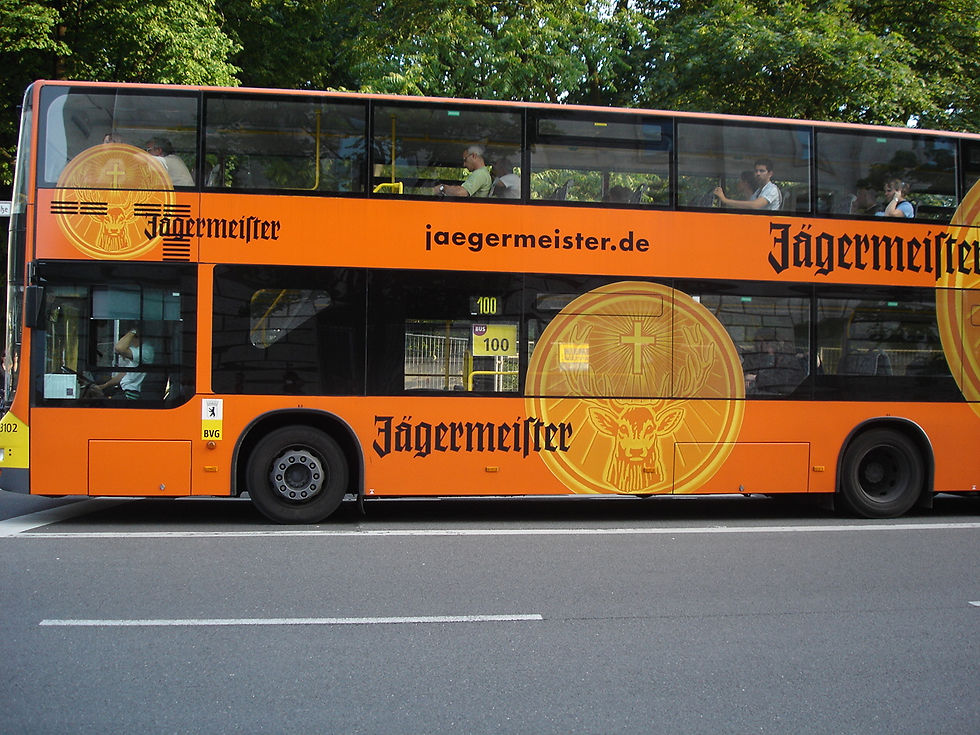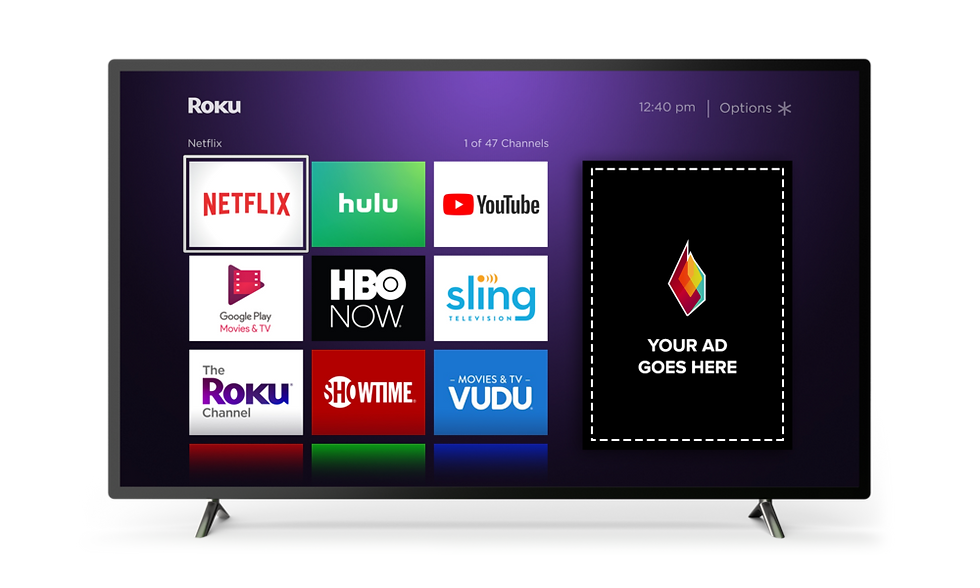ATL Marketing: Definition & Strategies
- Uttiya Roy
- Jul 31, 2023
- 7 min read
Updated: Sep 14, 2023
ATL Marketing refers to "above the line" marketing and is directed toward creating a brand image and positioning for prospective clients.
ATL marketing describes a group of advertising initiatives that use media outlets to reach a sizable and varied audience. ATL (Above the Line) marketing aims to cast a wide net and create significant brand awareness; in contrast to its counterpart, BTL (Below the Line) marketing concentrates on more direct and individualized contacts.
This strategy takes advantage of the greater reach of traditional marketing channels. These platforms have emerged as the cornerstone of ATL marketing, cutting across national borders and cultural divides. They range from primetime television commercials to eye-catching billboards dominating cityscapes and from radio spots accompanying daily commutes to print media ads gracing the pages of popular magazines.
However, ATL marketing has newer digital strategies, too, with influencer marketing, organic media, and broad intent-based advertising all playing a part in creating ATL strategies.
The Marketing Channels
ATL marketing platforms have a wider reach, making them crucial for increasing brand recognition and modifying customer attitudes. Let's examine some of the major ATL marketing channels and their importance for reaching the general public:
Television and Radio
One of the most important and influential ATL marketing tools is still television. Advertisers take advantage of the chance to concurrently market their goods and services to millions of viewers, whether during popular TV shows, significant athletic events, or cultural landmarks.
Super Bowl stands out in this case for being the premium space to debut new products and great advertisements, like this Squarespace ad with Zendaya.
This ad also demonstrates what you need to make ATL advertising stand out from the crowd, namely -
Eye-catching images
Catchy, anthemic lines
A memorable story
Print Media
While digital media has transformed the publishing industry, print media remains a relevant and valuable medium for ATL marketing. Magazine advertisements allow brands to engage niche audiences interested in specific topics or industries, while newspapers offer a wide reach across diverse demographics. The tactile nature of print media provides a tangible and lasting connection with readers, making it an effective complement to digital marketing efforts.
Print advertising is closest to Digital Media in terms of attention spans. Since moving away from the page is so easy, your messaging needs to be crisp and short, with interesting visuals that capture people's attention. A classic example is David Ogilvy's work for Volkswagen.

Outdoor Advertising
ATL marketing is synonymous with billboards, posters, and other forms of outdoor advertising. These visually appealing displays, carefully placed in high-traffic areas, catch the attention of passersby and generate a consistent visual presence for the advertised company. Outdoor advertising also has the advantage of allowing businesses to target specific regions or neighborhoods.

ATL Marketing Strategies
ATL marketing thrives on originality and connecting with a diverse audience. Successful advertisements do more than promote items; they elicit emotions, tell captivating stories, and leave an indelible impression. Here are some effective ATL marketing tactics for capturing consumers' attention and hearts:
Humor
Ads that use comedy can instantly engage with audiences and generate a good relationship with the company.
Clever jokes, witty one-liners, or entertaining scenarios can help to make the brand memorable and boost the chances of viral spreading.
Old Spice's "The Man Your Man Could Smell Like" is a brilliant campaign that featured a confident and amusing speaker who delivered funny remarks while promoting the brand's products. The witty approach helped Old Spice reach a wider audience and garnered substantial attention for the brand.
Emotional Storytelling
Using emotions like joy, nostalgia, or empathy, brands may create a deep and profound relationship with their customers.
Storytelling that elicits powerful emotions can have a long-lasting impact and increase brand loyalty.
For example, the Always "Like a Girl" campaign attempted to empower young females by challenging cultural prejudices. The commercial ignited dialogues about gender equality and earned widespread support by telling an emotional story that resonated with consumers.
Celebrity Endorsements
Associating a well-known celebrity with a brand can greatly increase its visibility and reputation.
Celebrities can give their celebrity and influence to a business, making it more relatable and desirable to customers.
For instance, Nike's long-standing collaboration with basketball legend Michael Jordan transformed sports marketing. The "Air Jordan" brand became a global phenomenon, and Jordan's affiliation with Nike is still recognizable today.
Jingles and Catchy Slogans
Music and catchy phrases you remember brands and reinforce the brand's identity in the eyes of consumers.
Catchy jingles and slogans can become part of popular culture, increasing the brand's visibility.
For example, McDonald's "I'm Lovin' It" jingle is instantly identifiable and connected with the brand globally. McDonald's and its goods have become linked with the simple and catchy jingle.
Brand Characters and Mascots
Creating a distinct brand character or mascot provides a distinctive face and personality.
These avatars can act as brand ambassadors by interacting with customers through various marketing channels.
For example, Geico Gecko, a popular cartoon character representing Geico Insurance, has become a memorable figure in Geico's advertising efforts. Geico's advertisements stand out in a competitive business thanks to the Gecko's charm and comedy.
Spectacular Visuals and VFX
High-quality images and eye-catching special effects draw attention and improve the visual appeal of commercials.
Stunning sights can evoke awe in viewers, producing a lasting impression.
For example, Apple's product launch events are famed for their stunning visuals and cutting-edge technology displays. Their clean and visually appealing advertisements emphasize the design and usefulness of their goods, setting a high bar for technology advertising.
Measuring the Effectiveness of ATL
Measuring the success of ATL marketing demands sophisticated statistics. Data-driven insights provide critical success metrics, including website traffic, social media engagement, and brand mentions. Analyzing these results assists marketers in refining future ads and increasing their reach.
Social media engagement

As measured by likes, shares, and comments, social media engagement demonstrates campaign resonance. Engaging content increases organic reach and word-of-mouth marketing, spreading the brand message to a larger audience.
Monitoring brand mentions, mood, and search volume can assist measure the success of an ATL campaign. Brand recognition increases as a result of successful communication and audience connection. Marketers constantly adapt ATL methods to strengthen their brand presence and develop long-term consumer relationships.
Tracking Website Traffic

The effectiveness of ATL campaigns is revealed via website analytics. Marketers receive significant insights about audience interest and the success of their messaging by tracking the rise in website visitors during and after a campaign.
Assessing Brand Awareness

Monitoring brand mentions, mood, and search traffic aids in determining the performance of ATL campaigns. Brand recognition increases as a result of successful communication and audience connection. Marketers constantly adapt ATL methods to strengthen their brand presence and develop long-term consumer relationships.
ATL Marketing in the Digital Age
ATL marketing adapts to the shifting terrain as the world accelerates into the digital age. Brands must now navigate a complicated web of online platforms, social media channels, and data-driven insights. The digital revolution has created new opportunities for ATL marketing, allowing firms to supplement their traditional efforts with innovative techniques that reach audiences worldwide.
Rise of CTV (Connected TV) and Programmatic Advertising

Connected TV (CTV) has emerged as a game changer in ATL marketing, providing advertisers with a link between traditional television and digital streaming. CTV delivers access to targeted audiences through personalized ad placements as viewers migrate from cable to streaming alternatives. Furthermore, programmatic advertising has transformed ad purchasing by automating the process and optimizing campaigns in real-time. Combining CTV and programmatic advertising, guarantees marketers reach the correct audiences with relevant content.
Integrating Online and Offline Efforts

ATL marketing in the digital age is about smoothly merging online and offline efforts, not just solo campaigns. Brands use social media platforms to broaden the reach of their television advertising, while online engagements drive consumers back to traditional channels. The combination of ATL and digital marketing results in a full brand experience that engages people across many touchpoints and reinforces brand recall.
Data-Driven Insights for Personalization

With access to massive volumes of data, ATL marketers can now gain important insights into consumer behavior, preferences, and interests. Brands may create highly tailored ATL advertisements that resonate profoundly by better understanding their consumers. Data-driven analytics aid in the refinement of messaging, the optimization of ad placements, and the identification of emerging trends, allowing marketers to remain nimble and adaptive in an ever-changing digital marketplace. With access to massive volumes of data, ATL marketers can now gain important insights into consumer behavior, preferences, and interests. Brands may create highly tailored ATL advertisements that resonate profoundly by better understanding their consumers. Data-driven analytics aid in the refinement of messaging, the optimization of ad placements, and the identification of emerging trends, allowing marketers to remain nimble and adaptive in an ever-changing digital marketplace.
Possible Future Trends

As the marketing landscape continues to evolve, the future of ATL marketing holds exciting possibilities and potential challenges. Several key trends are likely to shape the direction of ATL strategies in the coming years, revolutionizing how brands engage with their audiences and create lasting impressions.
Advanced Personalization and AI Integration
With the wealth of data available, ATL marketing will increasingly embrace advanced personalization. AI-powered algorithms will analyze consumer behavior, preferences, and interests to deliver highly tailored content across ATL channels. Brands will craft individualized messages that resonate deeply with each viewer, fostering stronger connections and enhancing brand loyalty.
Immersive Experiences and Interactive Storytelling
Future ATL campaigns will delve into immersive experiences and interactive storytelling. Brands will leverage emerging technologies like augmented reality (AR) and virtual reality (VR) to create captivating narratives that blur the lines between the real and virtual worlds. Viewers will actively participate in campaigns, forging deeper emotional connections with the brand.
Purpose-Driven Marketing and Sustainability Focus:
Brands will embrace purpose-driven marketing as consumer awareness about social and environmental issues grows. ATL campaigns will spotlight sustainability initiatives, social impact projects, and ethical practices. Aligning with meaningful causes will resonate with conscious consumers, driving brand advocacy and support.
Cross-Platform Integration and Omnichannel Marketing
ATL marketing will seamlessly integrate with omnichannel strategies. Brands will create cohesive experiences across traditional media, online platforms, and offline touchpoints. The fluid transition between ATL and BTL efforts will deliver a unified message, reinforcing brand identity and recall.
Voice Search Optimization
With the rise of voice assistants and smart speakers, ATL marketing will prioritize voice search optimization. Brands will craft concise and impactful messages that align with voice queries, ensuring visibility in voice-driven searches.
Dynamic Content and Real-Time Marketing
Future ATL campaigns will embrace dynamic content and real-time marketing. Marketers will respond swiftly to cultural events, trending topics, and viral moments, delivering timely and relevant campaigns that capture audience attention.
The future of ATL marketing promises innovation, personalization, and a deeper understanding of consumer behavior. By adapting to these emerging trends and leveraging technological advancements, brands can stay ahead of the curve and create ATL campaigns that resonate with audiences in a rapidly changing world.
ATL marketing's ability to resonate with diverse audiences and adaptability to new trends ensures its relevance even in the digital age. Through humor, emotional storytelling, celebrity endorsements, and captivating visuals, brands forge connections with consumers, embedding their presence in everyday life. As technology enables more personalization, ATL marketing embraces data-driven insights and AI integration to create individualized experiences that speak directly to each viewer's heart.
The future of ATL marketing holds exciting potential, with immersive experiences, purpose-driven campaigns, and seamless omnichannel integration on the horizon. Brands will continue to explore the uncharted territories of interactive storytelling, voice search optimization, and real-time marketing, solidifying their positions in the hearts of global audiences.



Comments